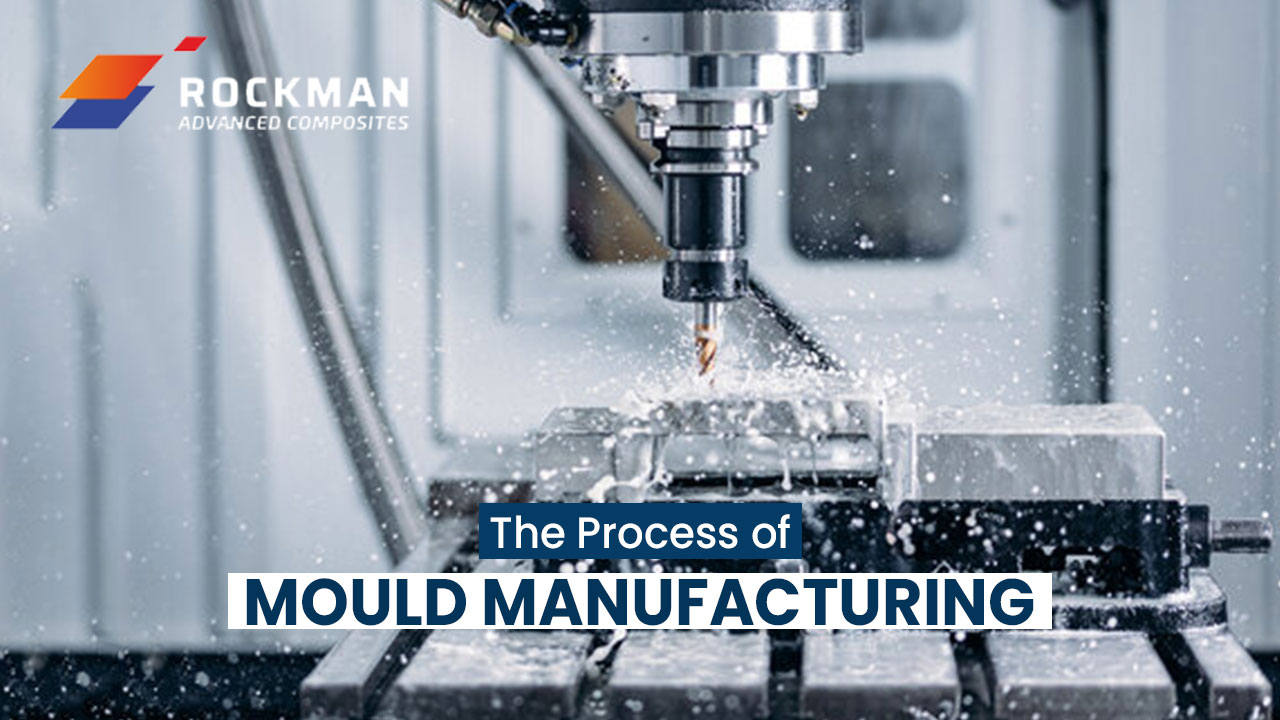
Mould is an efficient way used to manufacture metal or plastic parts that are required in the production of tools or parts. Moulds serve as the blueprint that is used for producing identical copies of a specific object. Mould plays a significant role in manufacturing diverse parts, from the precision crafting of automotive parts to sophisticated medical devices, mould leads to the mass manufacturing of products with unmatched accuracy and precision. Mould manufacturing is the process of designing and creating moulds that are later used to manufacture identical copies of a particular part. Mould manufacturing is a cornerstone of the manufacturing sector because of its ability to manufacture huge volumes of parts having uniformity, efficiency, and intricate detail.
Mould was first manufactured with the ancient technique to create weapons, jewellery, and artifacts in the Bronze Age that later on evolved through the centuries. The mould manufacturing has been pivotal in different civilizations, as this craft was taken further by the Egyptians and Sumerians who took forward this craft by creating molds for bricks, pottery, and metal objects. The mould manufacturing has evolved from the use of stone and clay moulds to the steel and silicone moulds that are used in today’s industries. Mould manufacturing has been quintessential in redefining progress and innovation.

Mould manufacturing is an intricate process shaping the backbone of worldwide manufacturing industries. This process involves creating custom-designed forms or cavities that shape materials like metals, plastic, ceramics, and glass into specific products. Mould manufacturing holds great significance across the manufacturing sector due to the following reasons:
Mass Production – Mass production of goods or products is possible only because of mould that provides a consistent and repeatable way to produce identical parts in bulk. Moulds make large-scale production feasible and cost-effective for manufacturers.
Ensure Precision – Moulds help automotive, aerospace, and healthcare industries to manufacture components with exact precision having minimal tolerances. These industries require precision components that can be manufactured with the help of mould.
Foster Innovation – Manufacturing industries are able to push the boundaries of innovation with the latest and most complex designed moulds that are manufactured with advanced moulding techniques like 3D moulding and multi-cavity moulding.
The production of moulds is a meticulous process that involves several stages, each requiring specialized skills and technologies:
Design and Engineering – The mould manufacturing journey begins with CAD software using which engineers create 3D models of the mould.
Material Selection – The material selection for making mould depends on the application for which mould will be used. Usually, materials like steel, aluminium, or composite materials are chosen for manufacturing moulds that affect the cost, durability, and performance of the mould.
Machining and Fabrication – After designing and material selection, the finalized design is brought to life through advanced machining techniques like CNC milling, and laser cutting.
Surface Finishing – To enhance the surface properties of the mould, these are polished, textured, and coated to make sure that the final products are aesthetic and functional.
Testing and Validation – Later the prepared moulds or the prototypes are tested under real-world conditions to make sure that the mould is properly functioning. If required, necessary changes are made before full-scale production.
Production and Maintenance – After testing and validation, moulds become operational and undergo regular maintenance to maintain their efficiency and durability.
The use of advanced technologies like 3D printing, CNC machining, and advanced mould design software is leading to major transformation in the industry. These advancements are leading to the manufacturing of complex mould designs, faster turnaround times, and better quality mould. These remarkable advancements over the years are driving technological innovation and are catering to the demand for highly efficient moulds. Some key developments in this field include:
Additive Manufacturing – Additive manufacturing or 3D printing allows the rapid prototyping of moulds, thereby reducing lead times and leading to the manufacture moulds of intricate designs that were previously impossible.
High-Performance Materials – Currently, advanced materials like titanium alloys and ceramics are used in mould manufacturing that enhances mould durability and performance, especially in high-temperature and high-pressure applications.
Industry 4.0 Integration – Smart technologies like IoT, sensors, and AI-driven analytics have been integrated into the manufacturing process that facilitates predictive maintenance and real-time monitoring of mould manufacturing.
Mould manufacturing is an indispensable part of the manufacturing ecosystem. Manufacturers in this challenging environment need to adopt innovation and adaptability to stay competitive. These manufacturers are leveraging cutting-edge technologies and sustainable practices to shape the manufacturing sector, driving advancements in quality, efficiency, and design. Understanding the intricacies of mould manufacturing is key to appreciating the art and science behind the products that are taken for granted.
The modern engineering field is recently unfurling several innovations and developments amongst which advanced composites have emerged as a premium component that is transforming engineering industries with high-performance products. This material has proved as a game-changer in diverse industries from automotive to aerospace, sports equipment to construction. Advanced composites are made from a combination of two or more constituent materials, and offer remarkable properties that can revolutionize the way automotive products are designed and manufactured. From reducing weight and increasing fuel efficiency to enhancing durability and improving safety, the promise of advanced composites in the automotive industry is truly remarkable.
Advanced composites are manufactured from two or more constituent materials having different physical and chemical properties. The combination of these materials produces a composite having distinct characteristics from the individual materials. Generally, advanced composites comprise materials such as polymers, ceramics, and metals along with reinforcement materials like fibers or particles. The perfect combination of materials in composites results in enhanced properties such as durability, corrosion resistance, high strength-to-weight ratio, and enhanced thermal stability. Advanced composites due to these improved properties turn out to be a lucrative choice for high-performance applications.
The manufacturing of advanced composites involves several sophisticated processes designed to optimize the properties of the final product. Some of the key manufacturing techniques include:
Hand Lay-Up – It is the simplest and primary manufacturing technique in which dry material layers are laid down by hand onto a mould to build a laminate stack. This process is termed labour-intensive but still is used for manufacturing large and complex parts.
Automated Fiber Placement (AFP) – This is an advanced manufacturing process performed using robotic arms. The robotic arms place the fibers in precise patterns, allowing better control over the orientation of the fiber. This further improves the quality and consistency of the final product.
Resin Transfer Molding (RTM) – In this advanced composites manufacturing process, first the fibers are placed into a mould and then resin is injected under pressure. This process is termed fiber impregnation and results in high-quality composite parts with enhanced mechanical properties.
Injection Moulding – Injection moulding is arguably the most widely used net-shape manufacturing process for composite materials. In this process, the bulk moulding compound is heated and then injected into a heated mould. The material is held under pressure until the resin cures. This technique is primarily used for creating relatively small components.
Additive Manufacturing – Also known as 3D printing, additive manufacturing is gaining traction in the composites industry. This process involves layer-by-layer deposition of composite materials, allowing for the creation of complex geometries and customized parts.
Recent advancements in advanced composites manufacturing are transforming industries with enhanced efficiency and performance. Following advancement and innovations in automated processes are experienced:
Use of Automated Process – The use of automated processes in manufacturing such as Automated Fiber Placement (AFP) and Automated Tape Laying (ATL) leads to the precise and rapid production of complex composite structures.
Durable and Improved Products – The integration of nanomaterials, including carbon nanotubes and graphene, has significantly improved the mechanical properties, thermal stability, and electrical conductivity of composites.
3D Printing – Additionally, the development of 3D printing technologies for composites allows for customized, lightweight, and high-strength components, revolutionizing design possibilities.
Environment-Friendly Manufacturing – Sustainable practices are also gaining traction, with bio-based resins and recyclable composites reducing environmental impact.
These advancements are not only pushing the boundaries of material capabilities but also making advanced composites more accessible and cost-effective for a wide range of applications, from aerospace and automotive to renewable energy and construction.
Advanced composites manufacturing is a dynamic and rapidly evolving field that holds immense potential for various industries. The unique properties of composites, combined with innovative manufacturing techniques, are driving the development of lighter, stronger, and more efficient materials. As technology continues to advance, the future of advanced composites looks promising, offering endless possibilities for creating high-performance products that meet the demands of the modern world.
In the field of material science, advanced composites have emerged as high-potential materials that stand out as transformative forces. Made from two or more constituent materials having different physical or chemical properties, the composite material has characteristics different from the individual components. Due to new and unique mechanical and physical properties, advanced composite materials are replacing conventional materials in diverse fields of applications like automotive, aeronautical, aerospace, and biomedical.
Advanced composites comprising of a matrix like a polymer, metal, or ceramic are reinforced with fibers like carbon, glass, or aramid and have revolutionized industries ranging from aerospace and automotive to sports equipment and renewable energy. The crux of advanced composites lies in their ability to blend the best properties of their constituents. For instance, carbon fiber-reinforced polymers (CFRP) offer a remarkable blend of high strength-to-weight ratio, stiffness, and corrosion resistance. This makes them ideal for applications where weight reduction is crucial without compromising structural integrity.
Advanced composites, also known as polymer composites, are created by merging a reinforcement material such as fiberglass, carbon fiber, or aramid fiber with a resin, which is essentially a type of polymer. This combination harnesses the strength of the fiber and the distinctive advantages of the polymer, such as fire resistance or chemical resistance. The manufacturing of polymer composites offers numerous methods, tailored to the desired properties, shape, and volume of the application. The manufacturing process of advanced composites is intricate and demands precision. The most common methods include:
Lay-Up Process – This involves manually placing layers of composite fibers in a mold, followed by pouring thermoset resin over the fiber layer. Pressure is applied using a hand roller to compact the fiber layer and impregnate it with thermoset resin. It’s a labour-intensive process but allows for high customization and is widely used in producing large structures like boat hulls and wind turbine blades. This method is widely used in the marine industry because of its low cost and simplicity.
Filament Winding – Filament winding is a technique mainly used to produce hollow, circular, or prismatic components like pipes and tanks. This process involves winding continuous fiber tows onto a rotating mandrel with a specialized winding machine. Filament-wound parts are widely used in the aerospace, energy, and consumer product industries. In this process, fibers are wound around a rotating mandrel in specific patterns and then impregnated with resin. This technique is excellent for creating high-strength cylindrical structures like pipes and pressure vessels.
Pultrusion – It is an automated manufacturing process in which continuous lengths of fibers are pulled through a resin bath and then through a heated die to form a constant cross-section profile. In this process reinforced fibers, pigments, and liquid pultrusion resins are pulled through a heated die, converting into composite materials. It’s highly efficient for producing uniform, high-strength composite materials like beams and rods.
Resin Transfer Molding (RTM) – In this process, fibers are cut into desired sizes and then placed in the lower half of a mold. The fiber is compacted until the desired thickness is achieved and then enclosed with a rigid upper mold. The resin is injected into the mold with injection pressure, filling the voids and creating a solid composite structure. RTM offers high dimensional accuracy and surface finish, making it suitable for complex shapes. This process is used to manufacture composite parts that have high mechanical properties and excellent surface quality.
Recent advancements in composite manufacturing have focused on improving efficiency, reducing costs, and enhancing material properties. Some notable innovations include:
Automated Fiber Placement (AFP) and Automated Tape Laying (ATL) – These technologies automate the placement of composite fibers, significantly increasing production speed and accuracy while reducing labor costs.
Additive Manufacturing (3D Printing) – The integration of additive manufacturing with composite materials is opening new possibilities. By printing with composite filaments or using continuous fiber reinforcement, complex and lightweight structures can be produced with minimal waste and lead time.
Nanotechnology – Incorporating nanomaterials like carbon nanotubes and graphene into composites can enhance their mechanical, thermal, and electrical properties. These nanoscale reinforcements can improve the performance of composites in applications ranging from electronics to aerospace.
Sustainable Composites – With growing environmental concerns, there is a push towards developing eco-friendly composites. This includes using bio-based resins and natural fibers and creating recycling processes for composite materials to reduce waste.
Advanced composites manufacturing is at the forefront of material innovation, driving progress across multiple industries. As technology continues to evolve, the development of more efficient, cost-effective, and sustainable manufacturing processes will further expand the applications of advanced composites. This ongoing revolution in materials science promises to deliver unprecedented performance and efficiency, shaping the future of engineering and design.
If you are enthusiastic to unfurl the fascinating world of advanced composites manufacturing and are inquisitive to know about the materials that make vehicles lighter and airplanes efficient and stronger, then you will enjoy reading this post. With lots of innovation and development happening in the modern engineering field, advanced composites have emerged as a key component. In modern engineering applications where high performance, durability, and lightweight features are vital advanced composites are strongly penetrating the industries. The use of advanced composites is driving advancement and empowering industries with high-performance products.
Advanced composites manufacturing involves combining two or more constituent materials having different physical or chemical properties. The resulting composite has different characteristics from the individual components. In advanced composites, each component plays its part in making something better. Common advanced composites include carbon fiber, glass fiber, nano composites, and fiber-reinforced plastics. These materials are renowned for their strength, lightweight, and resistance to environmental factors and find application in everything from aerospace and automotive industries to sports equipment and even medical devices.
Advanced composite materials are distinguished by their exceptional specific strength and stiffness. When paired with automated manufacturing processes, they enable the production of composite structures that are both lightweight and cost-efficient. The process of manufacturing advanced composites is complex, involving several techniques and steps such as:

The field of advanced composites manufacturing is constantly evolving, with new techniques pushing the boundaries of what’s possible.
3D Printing – Yes, even advanced composites can be 3D printed. This technique allows for complex geometric patterns that would be difficult to achieve with traditional methods. It’s particularly vital for rapid prototyping and customized parts.
Automated Tape Laying – This process uses computer-controlled machines to lay down composite tapes in precise patterns. It is consistent and quick compared to manual layup, making it ideal for large-scale production.
Out-of-Autoclave Curing – Traditional autoclaves are expensive and energy-intensive. This technique uses alternative methods like vacuum bagging and heated presses, reducing costs and environmental impact while still delivering high-quality results.
The real magic of advanced composites lies in their applications. Some of the areas in which advanced composites are used include:
Aerospace – Modern aircraft are full of composite materials. They reduce weight, which improves fuel efficiency and reduces emissions.
Automotive – From Formula-1 cars to electric vehicles, composites help make cars lighter and stronger. This translates to better performance and improved fuel economy.
Sports Equipment – Ever wonder why tennis rackets, golf clubs, and bicycles are so much lighter and stronger today? It is because of the advanced composites that enhance performance while reducing fatigue for athletes.
Renewable Energy – Wind turbine blades are often made from fiberglass composites. Their strength and durability allow them to withstand harsh weather conditions while being lightweight enough to be efficient.
The future of advanced composite manufacturing is incredibly bright. Researchers are exploring new materials like nano composites and bio-based resins. These innovations promise to deliver even better performance and sustainability. With consistent innovation advanced composites are set to play a pivotal role in shaping the technologies of tomorrow. So, whether you’re an engineer, a designer, or just a curious mind, keep an eye on this space. The world of advanced composites is only just beginning to unfold its full potential.